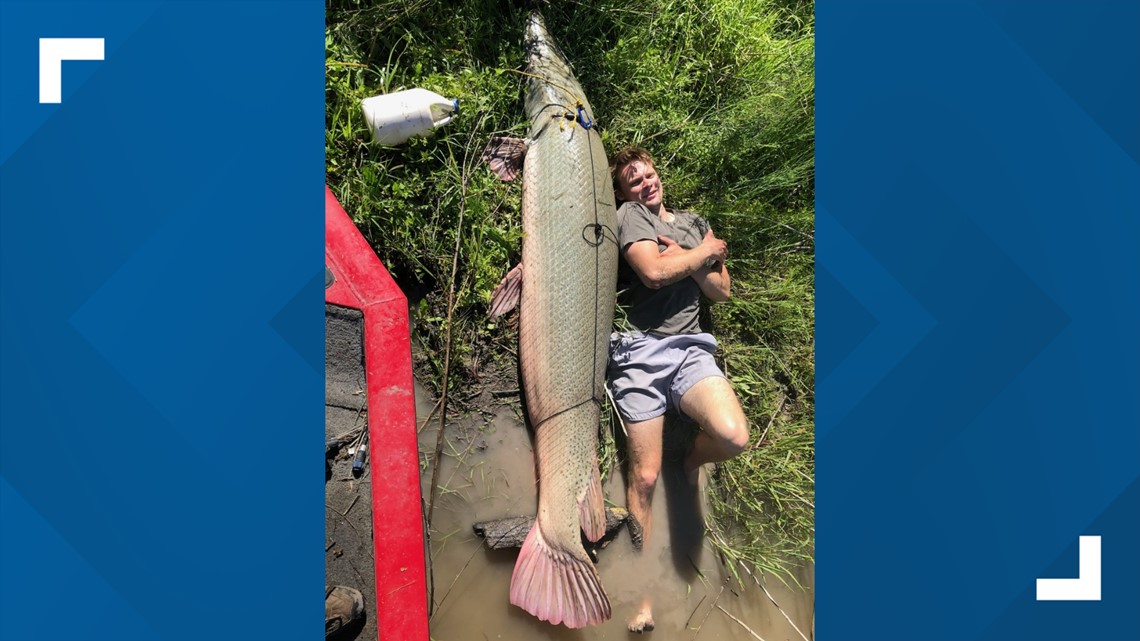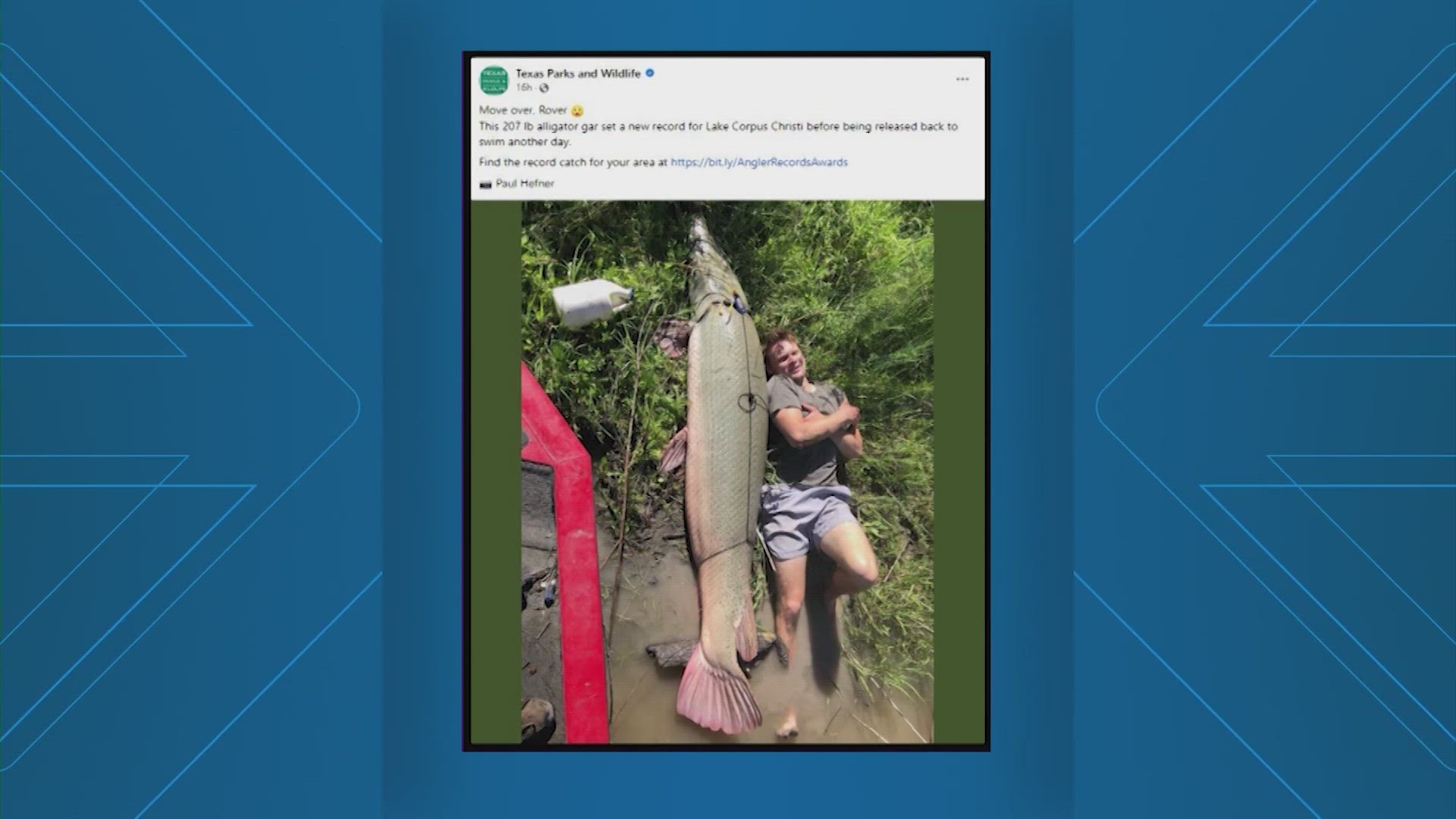NUECES COUNTY, Texas — "Move over, Rover!"
A 207-pound alligator gar set a record for Lake Corpus Christi before it was released back into the water recently.
Texas Parks and Wildlife shared a photo of the record catch on the ground next to an angler.
The state record for an alligator gar fish is 302 pounds, which was caught on a trotline in 1953. TPW officials said bow fishers and rod and reel anglers have landed several specimens in excess of 200 pounds.
According to wildlife officials, gars are easily distinguished from other freshwater species by their long, slender, cylindrical bodies, long snouts, and diamond-shaped interlocking scales.
Alligator gar can grow up to 8 feet long and weigh more than 300 pounds. The adults have two rows of large teeth on either side of the upper jaw.
The species name spatula is Latin for "spoon," referring to the creature's broad snout.


Is alligator gar good to eat?
According to Texas Parks and Wildfire, alligator gar is comparable to many sport fishes that anglers eat having a mild taste. There are commercial fisheries in some southern states.
However, they note that the eggs of alligator gar are toxic and may cause sickness if eaten.
This is because alligator gar are exposed to contaminants in the waters in which they live along with the things they eat which can then build up in their eggs. This poses a risk to humans if eaten.
Are alligator gars aggressive?
Alligator gar may look scary and frightening with their size and toothy appearance, but these gentle giants often get a bad rap.
According to Texas Parks and Wildlife, these large fish are quite sluggish and docile. Their feeding behavior makes them a challenge to catch as they can be slow or hesitant to swallow bait.
Wildlife officials explain that the teeth of the alligator gar are designed for holding and subduing prey, not tearing it into bite-sized chunks like sharks.
Basically, they don’t eat things they cannot swallow.
One thing to be aware of is their size and boney scales. Wildlife officials said that anglers should be careful when trying to handle them. They recommend using a rope lasso, large net, or cradle to land the fish.

